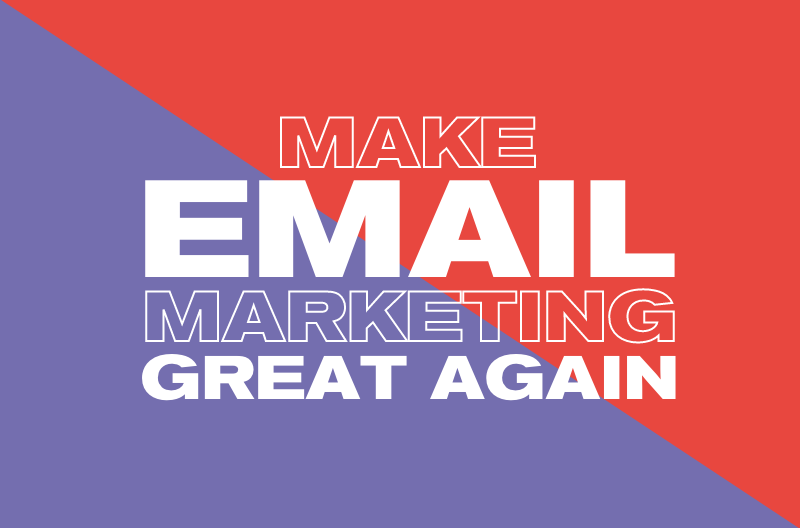16 January 2023
5 Ways To Improve Ecommerce CVR
Read More

It almost goes without saying, but data is super important to marketers. Without data, how would we know how great our campaigns are doing?
But, with great power (data), comes great responsibility, alongside some really great email marketing strategies.
Data comes in many forms, from names and email addresses to birthdays and more, and being able to properly utilise it could be the difference between making or breaking your relationships with customers.
So, let’s delve into the wonderful world of first-party data, and figure out how to get your email lists optimised and get your email marketing strategy out of the junkbox.
First-party data is essential if you’re wanting to form meaningful connections, and communicate effectively with your new and existing customers.
And, while that may sound like a win-win for marketers and consumers, it does beg the question: what actually is first-party data?
Thankfully, this chart should answer that (and clear up the differences between first, second, and third-party data, too):

Does that clear things up?
Essentially, first-party data is information collected directly from your audience via sources such as your site, social media conversations, survey data, customer feedback and more. It’s from customers who choose to opt-in to give you their data – how kind!
Then second-party data is gained from an external source, which is still useful, and holds an element of risk as you’ve gained the data from an entity that doesn’t have the same direct, personal relationship with your customers.
And finally, we come to third-party data. This is compiled information from all kinds of sources that have no direct link to your business, and can be sold to anyone – including your competitors. Though this gives you some insight, it’s not as useful or niche.
We love data, and though that might make us sound a little nerdy – we’ll own it.
However, people aren’t so willing to hand out their data. So, if you’ve got someone’s data, make sure to keep it safe and secure – it’s a precious resource.
According to recent research, US consumers are pretty strung up about their data, with 96% of respondents agreeing that companies should do more to protect their privacy. However, the data suggests that UK consumers are generally relaxed about data privacy – which translates to a willingness to share data with more companies.
This bodes well for companies in the UK. Being able to gather this first-party data is the most trustworthy way of connecting with your audience, so you can effectively nurture and personalise your marketing for your customers. This way, you’re giving your customers the content they actually want – a customer-centric approach.
First-party data can be utilised in many ways, like retargeting through advertisements. Think back to a time when you searched for something, clicked on a product and then a few hours later it appeared on your Instagram feed, urging you to take the plunge and buy it. Yep, that’s first-party retargeting at its finest.
And this data can be a powerful tool for your email campaigns, too. Email can often go by under-appreciated, but realistically, email is the closest thing to having a one-to-one conversation with your customers in today’s virtual world. So, use first-party to build your campaigns, nurture your audience and learn what your ideal customer looks like, and how you can utilise this data to reach them.
When it comes to email, there’s no point firing out a load of jazzy emails that effectively do and say nothing. You need a strategy behind every single email – otherwise, that audience you worked so hard to build will be heading straight to the ‘Unsubscribe from all emails’ button.
Making the most out of first-party data works two ways – you can not only use the data you have on hand to start boosting your strategy immediately via personalisation, but you can also use it to gather even more first-party data from leads.
And as it stands, the time to start building first-party data is right now.
Here’s a few ways you can build out your strategy to start collecting first-party data to use to your advantage:
Every single time a consumer hands over their data to you, they’re agreeing to continue their relationship with you and your brand – a match made in heaven.
However you decide to collect data from your customers, keep it gentle and don’t bombard them with millions of random questions about where they live, what they had for lunch today and what they’re doing over Christmas and so on. Figure out what you need to know and keep your data collection subtle.
People are precious over their privacy, so give it the respect it deserves! People don’t go handing this information out to any Tom, Dick or Harry walking down the street (understandably so, that’d be a little strange). So, appreciate it once you’ve got it, you’ve been given it for a reason.
The impact of email can often go under the radar – but now’s the time to change that.
With an estimated growth to 4.6 billion email users across the world by 2025, alongside Google confirming the phasing out of third-party cookie’s usage, it’s time to take email seriously and base the majority of your email activity around first-party data as we continue into 2023.
However, sometimes it can be a little tricky to know where to start. Our experience in everything email means that we’re experts at making killer campaigns – click here to read more about our email marketing services.


Still the same great data driven services, but now with a different name